- Research Journey
- Knowledge of Theory
- Knowledge of Research
- Instructional Competencies
- Professional Competencies
- Conclusion
Diane Montgomery
MEd, ET/P, Phd Candidate
Supervisor- Dr. Kathy Snow
Committee Member- Dr. Ron MacDonald, Dr. Ken MacKinnon
Welcome to my research journey which included my achievements, challenges and lessons learned during the initial stage of my PhD program. This journey has impacted my role as an educator, educational therapist, and consultant in my private practice. My journey included:
- An introduction to my research interest
- A CV of my academic and professional experience
- 5 artifacts which demonstrated my:
- Knowledge of theory
- Knowledge of research
- Instructional competencies
- Professional competencies
- Conclusion and next steps
I started below with the INTRODUCTION to my research interest:
My interest in education started many years ago at age 15 when I attended the first alternative high school in Scarborough, Ontario. As a very shy, compliant child, it was the first time I felt noticed as an individual and was challenged to earn the grades I received. However, it was only after being provided with a lot of choice of when, where and what I learned and how I would apply that knowledge that I knew I wanted to be an educator but not a traditional educator at a ‘regular’ school. After many years of teaching, managing and leading others in private and corporate settings, I am now an educator, educational therapist and consultant in inclusive educational practices.
My curiosity about how people learn best was triggered when reflecting on my own diverse educational experiences as well as those of my son with autism and daughter with mental anxiety. I came to the realization that I had become a client focused educator. As a business professional, the client is the customer I have to serve; as a mother, the client is the child I have to nurture; and as an educator, the client is the student I have to guide to reach their potential. According to Carl Rogers, (cited in Grabau, 2017), “Learning of all kinds goes on best, and lasts best when it grows out of real focus of interest in the learner” (par. 1). Thereby, throughout my journey, I demonstrated how the theoretical and research knowledge, and instructional and professional competencies I developed aligned with a client centered approach of; understanding the student, guiding and motivating the student, learning from the student; providing the student with choice, and advocating for the student.
Understanding the Student
I started with an example of the impact of ‘understanding the student’. When I started my research journey, I initially thought I was opening one door and closing another when I left my tutoring franchise behind. But after receiving a text message from a past client, I could not help but reflect on the quote of Henry Brooks Adams (1918), “A teacher affects eternity. He can never tell where his influence stops”. My business was more than just promising to help students increase their grades; it was about teaching students how to learn forever by first understanding the whole student, and hiring teachers who were successful at motivating them to learn. According to Dweck (2016), “Test scores and measures of achievement tell you where a student is but they don’t tell you where a student could end up” (p.66). The text shared by my client below illustrated the long term impact a team of educators can have on a student who was initially failing without the motivation to learn.
Hi Diane — how are you doing? I’m not sure if you saw my posts about Emma going to Talbott University? She’s taking Forensics & Psychology. She graduated with a 91.5 average which was no easy feat in Covid. And I often think back to Karla’s math tutoring back in grades 5/6… Which doesn’t really seem that long ago but it is lol. So I really wanted to share with you how Emma’s long-term success is attributed to your tutoring service! I still have the flag cards she made when learning her multiplication tables! I still can’t believe they don’t teach that in school lol. She can do mental math due to drilling that into her brain!” (Club Z tutoring client, 2022)
This communication made me realize just how much my past experiences could really never be separated from my current and future journeys as an academic scholar.
References:
Grabau, C. (2017). Person centered perspectives on inclusive teaching. https://reinertcenter.com/2017/02/22/person-centered-perspectives-on-inclusive-teaching/
Adams, H. (1918). The Education of Henry Adams: An autobiography. Houghton Mifflin Co.
Dweck, C.S. (2016) Mindset: The new psychology of success. Random House.
GUIDING AND MOTIVATING THE STUDENT
My knowledge of theory was grounded on educational theories which examined how and why students learn. The theories suggested that students learned best through intrinsic motivation and when guided to become self-directed learners. Although I perused the works of John Dewey and Carl Rogers, I became most immersed in the self-efficacy theory, self-determination theory and implicit theories of intelligence; so I proposed a motivational theory framework to integrate the underpinnings of these three contemporary theories. I also wanted to learn if and how this motivational theory framework could be applied to the varied educational experiences of a diverse family, so I invited my son and daughter to co-author an article with me which was published in the Learning Landscapes journal. Accordingly, this article was my first artifact which I reflected on below.
Montgomery, D. P., Montgomery, M., Montgomery, M.T. Theories of motivation to support the needs of all learners. Learning Landscapes Journal.

The artifact which demonstrated my knowledge of theory was a journal article co-authored by my son, my daughter and I, which illustrated the impact of motivational theories on each of our diverse educational experiences. The works of Rogers and Dewey explained how self-directed learning and active learning through experience influenced my own early educational encounters (Dewey, 1899; Provenzoi, E, 1979; Rogers, 1969). However, the bulk of my theoretical knowledge was gained through a deeper investigation into Bandura's self-efficacy theory, Deci and Ryan’s self-determination theory (SDT), and Dweck’s implicit theories of intelligence.
Bandura (1997) proposed that self-efficacy is based on: performance accomplishment through the mastery of experiences, vicarious experience through observing others perform similar tasks, verbal persuasion through feedback, and physiological states through an emotional arousal. Although Deci et al (1991) agreed with the importance of self-efficacy, they believed that self-efficacy only focuses on the direction of behavior that leads to the outcome, whereas SDT addresses both the direction and the reason for certain outcomes. Deci and Ryan (2000) maintained that three basic psychological needs are essential to drive motivation: competency through the feeling of mastery and feedback; autonomy through self-initiation and self-regulation of one’s own actions; and relatedness through the feeling of belongingness. Self-efficacy theory suggested that the perceived competence a person has to perform a specific task engenders externally motivated behavior; whereas, SDT focuses on intrinsic motivation and postulates both competence and autonomy are essential to intrinsically motivated behavior (Bandura, 1997; Rhew et al., 2018). SDT proposes that external motivation can be autonomous or controlled falling along a continuum with varying degrees of extrinsic motivation (Deci & Ryan, 1985; Ryan & Deci, 2020). Intrinsic motivation was further expanded in Dweck’s implicit theories of intelligence, commonly known as growth mindset and fixed mindset (Dweck, 2016; Dweck & Yeager, 2019). Dweck suggested that individuals who believe their abilities are innate and cannot be changed have a fixed mindset; in contrast to those with a growth mindset who believe their development is based on the extent of their efforts. Dweck maintained that individuals with a fixed mindset are externally motivated whereas those with a growth mindset are intrinsically motivated (Dweck, 2016).
When applying these theories to the lived experiences of diverse learners, I recognized the endless outcomes an instructional practice could elicit on a student’s motivation depending on the motivational tendency of the individual (Deci et al, 1991; Dweck, 1999; Dweck et al., 2020; Ryan & Deci, 2000; Yeager and Dweck, 2020). This lesson caused me to reflect on the ways I may have positively influenced or negatively stifled the learning of my own children or some of the students I have taught, specifically when I praised them for intelligence instead of effort, or resisted to encourage challenging experiences (Haimovitz & Dweck, 2017, RSA, 2013). I also learned how baffling it might be to identify and influence learners with fixed and growth mindsets as there are many variations that define these labels (Dweck, 2016; Haimovitz & Dweck’s, 2017). In the vignettes of Matt and Molly, it was sometimes difficult to determine if each had a growth or fixed mindset depending on the circumstances. Of the three theories, STD offers the most detailed approach into pinpointing not only if a learner is extrinsically or intrinsically motivated but to what degree within the SDT continuum from Amotivation, to autonomous and controlled extrinsic motivations, to intrinsic motivation (Deci & Ryan, 1985; Ryan & Deci, 2020). Therefore, SDT was the most suitable theoretical framework to ground my dissertation research.
REFERENCES have been included in the full version of my introductory paper.
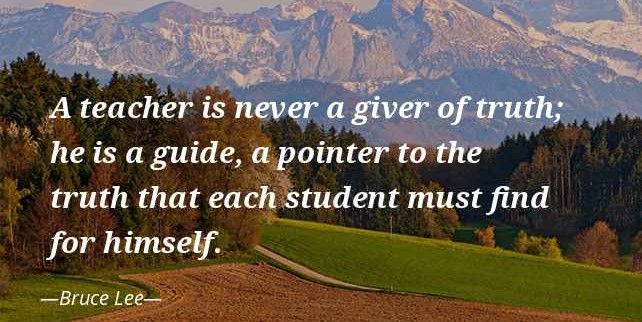
PROPOSED MOTIVATIONAL THEORY FRAMEWORK

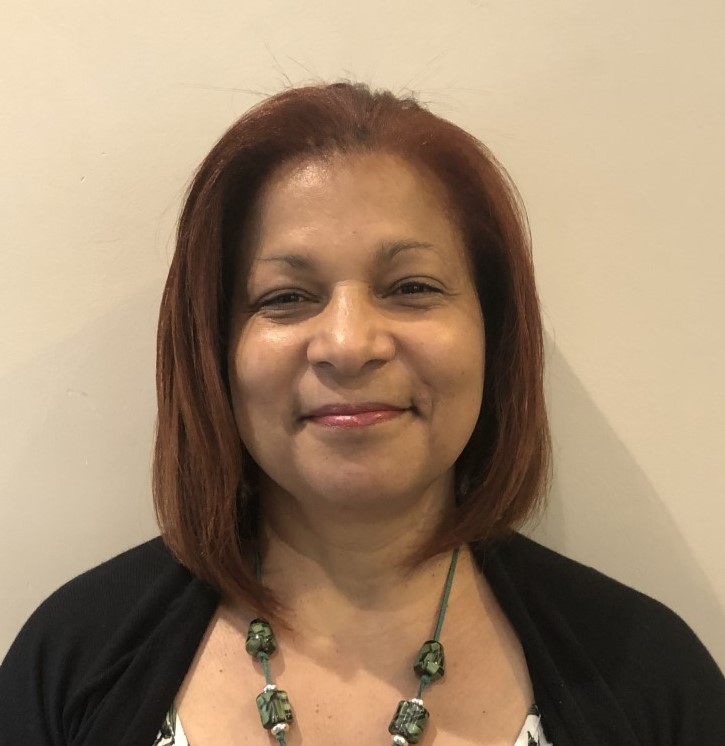
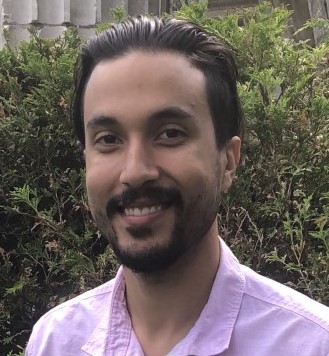
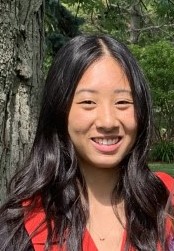
LEARNING FROM THE STUDENT
During my research journey, I engaged in a variety of projects to expand my knowledge of research. These experiences exposed me to every portion of the research cycle including literature review, research ethics board application, research design/methodology, data collection, data analysis and scholarly writing. I also engaged in comparative analyses of several methodologies including: case study, constructivist grounded theory, mixed methods, action research, and design based research. Therefore my knowledge of research was demonstrated through a research portfolio.

Lessons of Literature Reviews
Of the five research projects I engaged in, I completed four full literature reviews which involved the review of hundreds of data sources. After the first literature review, I quickly appreciated the importance of maintaining a well grounded reference library to easily retrieve my sources. An annotated bibliography was also useful when the literature review was only one segment of the project and required further refinement by a third party, as in the study on large scale assessments. After submitting my first article to a scholarly journal, I realized the critical analysis of my literature reviews could be strengthened after receiving the following feedback from the editors:
You have a clear focus on UDL but there are many critiques of this framework. I believe it would be beneficial to unpack this theory further in the manuscript for readers to have (a) an understanding of what it is (b) research that has been done with it and on it to support its value (indicating the arguments for/against), and (c) why it’s relevant to your topic and the current status/questions you’re asking. This would set for a stronger theoretical frame for the paper. (Canadian Journal of Education, personal communication, Feb. 24, 2022).
I appreciated this feedback as well as other feedback received from my supervisor and research teams to consistently enhance my skills in literature reviews. My research projects and my directed studies work has also allowed me to expand my knowledge of several methodologies including case study, constructivist grounded theory, mixed methods, action research and design based research.
A Variety of Methodologies
The two research papers I submitted to journals were based on qualitative case studies, which Merriam & Tisdell (2016) defined as “an in-depth description and analysis of a bounded system” (p.37). Each study occurred within a specific boundary where rich data was generated from a sample of teachers and students about their educational experiences in online and physical inclusive classrooms. In a quest to expand my knowledge of methodologies, I used constructivist grounded theory in my research assistantship with Dr. Thorne exploring teachers' experiences of assessment practices and I deepened my knowledge further in Dr. Fitzgerald’s Advanced Qualitative Methods Research course. Grounded theory is “generated or grounded in data from the participants who have experienced the process” (Strauss & Corbin cited in Creswell, 2013, p. 83). Unlike traditional grounded theorists who believe data is discovered naturally from the participants, constructivist grounded theorists propose that researchers construct meaning with their interactions with participants and various data sources; which aligns with my epistemological view (Charmaz, 2006). In preparation for my dissertation, my directed studies also involved a comprehensive analysis of mixed methods, action research and design based research (DBR) which enabled me to determine that DBR was the most appropriate approach for my dissertation.
Methods- Experiences with Recruitment, Data Collection and Data Analysis
The final stage of the research cycle which provided me with substantial knowledge was the various methods adopted in participant recruitment, data collection and data analysis. Of all three areas, participant recruitment was the most challenging as it required understanding the needs, interests and time commitment of the potential participants. It also involved invitation requests through third parties when direct contact with the participants was limited or ethics approval from multiple organizations. This depended on the timely distribution of the invitation and the interest of the participants, if the benefits to them were unclear. In my first research project with teachers, I was fortunate to receive the appropriate ethics approval and recruitment support from a large school board. In my second study, I had direct contact with the student participants which eased the process of participant recruitment. However, in my third study, my assumption was overly optimistic about participant involvement; that inservice teachers in the Master of Education program at UPEI would have the time or interest to participate in my study. This resulted in the decision to pause the project.
In each of my projects, I also had the opportunity to expand my interview, observation and transcription skills. This was my preferred phase of the research process as it enabled me to interact closely with the participants and truly understand their issues. The interview format I primarily utilized was semi-structured interviews to generate rich dialogues, and member checking followed the interviews to increase credibility of the data collected. The restrictions of in person research during the COVID-19 pandemic enhanced my skills in conducting online interviews, so I can now offer the flexibility of either online or in person interviews depending on the purpose of the research, and preferences of the participants. In relation to data analysis, I started my projects with manual analytical techniques, but I now enjoy the benefits of computer-based software, including SPSS statistical software and Atlas.ti 22 data analysis software. Based on the knowledge and/or experiences gained through all parts of the research cycle, I became well positioned to continue extensive research for myself or as part of a research team.
REFERENCES have been included in the full version of my introductory paper.
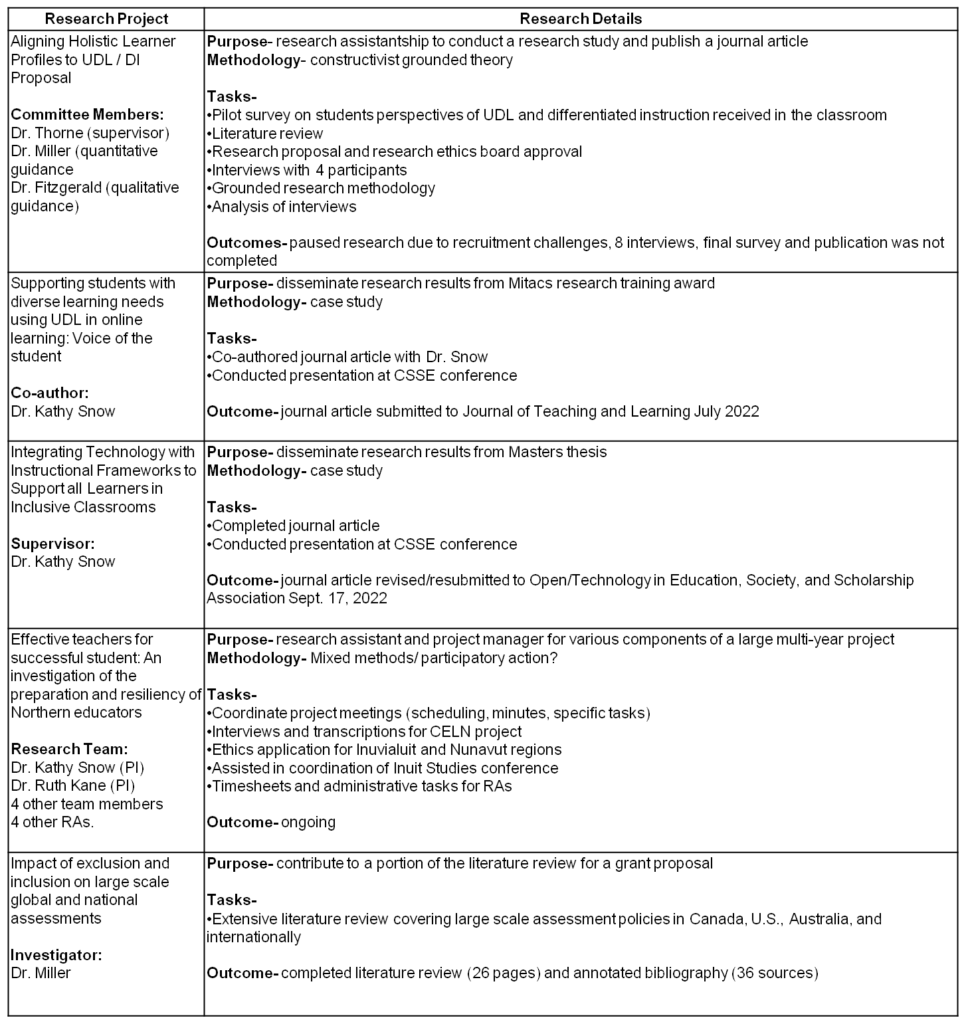
PUBLICATIONS
Montgomery, D. & Snow, K. (2024), . Supporting students with diverse learning needs using UDL in online learning: Voice of the students. The Journal of Teaching and Learning.
Montgomery, D. (2022). Integrating Technology with Instructional Frameworks to Support All Learners in Inclusive Classrooms. Open/Technology in Education, Society, and Scholarship Association.
Montgomery, D. (2022). (Review of the book Colour Matters: Essays on the Experiences, Education and Pursuits of Black Youth. Book by Carl E. James). Canadian Journal of Education.
Montgomery, D. (2022). The tiered approach to support all learners in inclusive classrooms. Charlottetown, PE: University of Prince Edward Island. Retrieved from https://islandscholar.ca/islandora/object/ir:24372/datastream/PDF/download/citation.pdf
PROVIDING THE STUDENT WITH CHOICE
When I started the PhD journey, I recognized a gap in my instructional competencies at the postsecondary level so I developed an intentional plan to develop and expand these competencies. During my first two semesters of the PhD program, I reached out to Dr. Sanchez and Dr. Fitzgerald to volunteer as a teaching assistant in their ED-6030- Practices for Inclusive Education, and ED-6150-Educational Leadership courses respectively. I was exposed to different instructional styles and environmental settings as half of ED-6150 was conducted online due to the in person restrictions of the COVID-19 pandemic. I also completed the first domain of UPEI’s Academic Instructional Skills Program (AISP) which focused on developing a teaching philosophy and a teaching dossier.
However, my instructional competencies were most developed during my role as a sessional instructor for two simultaneous cohorts (elementary and secondary) of ED-4150 Diversity and Inclusive Classrooms so a teaching dossier of this experience was my third artifact. This dossier included:
- Course Syllubus
- Interactive Reference Guide (with comprehensive details of the course)
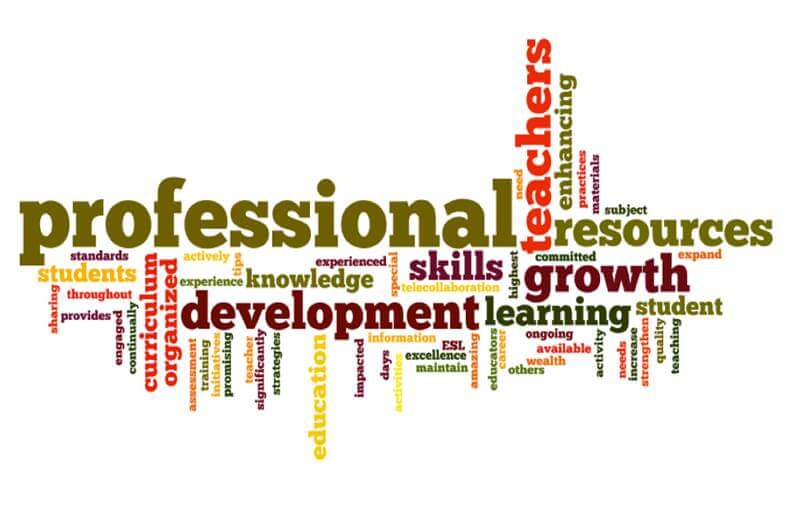
I applied for the sessional instructor position based on my previous experience in adult training and development, and my knowledge of inclusive education. My teaching philosophies align with Dewey’s beliefs that knowledge is constructed when learners use existing experiences through active learning to acquire new knowledge (Dewey,1899). Similar to Rogers humanistic theory, I also believe in a student-centered approach through self-directed learning (Rogers,1969). In relation to motivation, I concur with the concepts of the self-determination theory (SDT) which propose the need for competence, autonomy and relatedness in order to trigger intrinsic motivation (Deci & Ryan, 2000). Finally, my values about inclusive education correlate with the principles of Universal Design for Learning (UDL) which provides students with multiple means of engagement, multiple means of representation, and multiple means of action and expression (Cast, 2018). These combined concepts can be observed in the elements of the Response to Intervention (RTI) framework; a tiered approach to identifying students’ needs, implementing appropriate instructional strategies, and monitoring students’ progress. My teaching approach models an integration of the UDL and RTI frameworks, so within the ED-4150 course, my objective was to first get to know the needs, strengths, interests, and learning preferences of each student, and provide the students with flexibility and choice of instructional and assessment methods.
Inclusive Instructional Strategies
I started the course by having the students complete a Google survey to learn about their interests, strengths, learning preferences, prior inclusive teaching practices, goals for the course, and any learning challenges they wanted to share. The results of the survey were incorporated into an automated class profile I designed, providing me with a broad overview of learner profiles. This process assisted me to learn the names of the 60 students within both cohorts. After recognizing that many students struggled with mental anxiety, difficulties sustaining attention, and learned best through hands-on activities, I adjusted the break time from (one) twenty minute break to (two) ten minute breaks which the class appreciated. I also incorporated a variety of practical hands-on activities so students could develop resources that they could maintain for future use in their own classrooms. In order to support students in achieving their course objectives, I offered multiple forms of informal feedback outside of class through online zoom sessions, email and in person appointments. I also monitored students’ progress in class using exit cards and a mid course check in survey. These feedback strategies were most valuable as they enabled me to identify the instructional strategies that were working well as well as those that required improvement so I could adjust my teaching practices to support the students in achieving their goals.
Mid course feedback
The strategies that students found helpful were the variety of practical collaborative activities, the regular feedback I offered, the enhanced use of technology, the lessons on motivational theories, UDL, class/learner profile, and the personal examples and experiences I shared of effective inclusive practices.
The areas of greatest concern for the students were the clarity of instructions for assignments, the pace of my oral communication and the organization of course materials. In an effort to align with the principles of UDL, I tried to offer more choice and flexibility in structure of assignments but this resulted in more confusion for students who preferred more explicit instructions. The students also preferred all content be maintained in one place instead of a combination of Google and Moodle.
Keeping this feedback in mind and with only two weeks left in the course, I developed an interactive reference guide to condense the key components of the entire course and include practical resources. The informal feedback and comments from the SOTs suggested that the students appreciated the guide. However, since the SOTs feedback was reflective of the entire course, some of the comments in the SOTs were similar to the comments from the mid course feedback.
SOTs Feedback: Teaching most beneficial to students’ learning
In general, I am proud of the outcome of my first postsecondary teaching assignment as the SOTS indicated that the students appreciated the content (specifically learner profiles, UDL strategies, group presentations, guest student and guest speaker with a disability), they valued the feedback and they respected the knowledge and enthusiasm I displayed. A couple of examples representing these views included:
“I really enjoyed the way Diane provided us with class resources through Google docs so that we have access to these resources moving forward. Diane also provided us with a great opportunity to teach/observe the teaching of a student with an intellectual disability”.
“The assignments were extremely relevant and practical and I really appreciated that. Learner profiles and class profiles are beneficial tools. I also appreciated the focus on UDL as it is an area many educators are unfamiliar with.”
SOTs Feedback: Teaching which could have been completed differently
The areas requiring most improvement were; the access to and organization of materials, my oral pace and clarity of instruction. A few meaningful comments reflecting these views were:
“At times I felt confused about where certain documents were. However, Diane responded very well to our feedback and created a large document with everything in it which really helped”.
“Reduce the pace just a little because at times it was just a little hard to keep up for those of us who process a little more slowly.”
Since the students found it challenging to access materials on both Moodle and Google, I started maintaining all resources on Moodle with the ability to still use the collaborative features within Google. In relation to my oral pace, I also reduced some of the course content and slowed down my pace to ensure a balance of pace for all learners. The clarity of instructions and format of assignments was the most significant concern for students and the most enlightening lesson for me as it seemed to conflict with my teaching philosophy of providing choice and flexibility.
However, after further reflection on SDT theory, I realized that choice can still be provided with structure depending on whether the student’s motivation is intrinsic or extrinsic (Deci & Ryan, 2020). For example, if a student is extrinsically instead of intrinsically motivated to learn and seeks validation of achievement, the student may have the desire (autonomy) but not the perceived ability (perceived competence) to achieve a task (Rodgers et al., 2014; Ryan, 1982). According to Deci and Ryan, both autonomy and competence are required to trigger intrinsic motivation (Deci & Ryan, 2000; Rhew et al., 2018). A teacher can enhance competency by providing opportunities to master experience, just as they can induce a greater feeling of autonomy through choice (Ryan & Deci, 2000; Ryan, 1982; Deci & Ryan, 1985). In my course, I may have provided autonomy through choice, but failed to recognize the need for mastery through more formal instruction. An approach suggested by Deci et al. (1991) to promote self-determination is “offering choice, minimizing controls, acknowledging feelings, and making available information that is needed for decision making and for performing the target task” (p. 342). Therefore my courses now incorporate a better balance between structure and flexibility.
Comparison of elementary and secondary cohorts
There were benefits and challenges to teaching simultaneous cohorts. One benefit was the ability to adjust content or teaching strategies in the second cohort depending on its effectiveness in the first cohort. This effort was evidenced based on the higher ratings I received in the elementary (second cohort) than the secondary (first cohort). Overall, this experience was exhilarating, and motivated me to continue expanding my instructional competencies through future sessional instructional opportunities.
REFERENCES have been included in the full version of my introductory paper.
ADVOCATING FOR THE STUDENT
I had an extensive career in the educational and financial services industries, in senior management and entrepreneurial roles which grounded my professional competencies in leadership development, presenting, recruitment, and relationship management. Drawing upon this foundation, as an academic scholar, my desire was to continue advocating for the student by disseminating knowledge and research of inclusive education through community networks, educational institutions and professional organizations. Therefore, the two artifacts which demonstrated my professional competencies were; a video presentation at the Canadian Society for the Study of Education (CSSE) conference (artifact #4) and my community service contributions at UPEI (artifact #5) outlined below:

My presentation (and supplementary conference proceedings) at the CSSE conference combined the results of two research studies; 1) the examination of inclusive practices of elementary school teachers in online and bricks and mortar classrooms and, 2) the online learning experiences of students with and without disabilities during the COVID-19 pandemic. The student study revealed that limited means of engagement was the most significant factor impacting students' motivation and ability to learn. The teachers' study indicated a need for consistent assessment approaches to earlier identify and meet the needs of all students. As this was my first time at the CSSE, I was especially nervous so I prerecorded the presentation several times to critique and make improvements, so the video artifact is a practice session and not the final conference presentation.
The outcome of this presentation resulted in an invitation from the Toronto District School Board (TDSB) to share my research with their entire Special Education department at a professional development day on Sept. 6, 2022. In my role as Vice Chair of the Special Education Advisory Committee (SEAC), I was able to propose recommendations that aligned with some of TDSB’s current initiatives including refined learner profiles to address barriers in inconsistent assessment approaches and a consultative model to support teachers in the classroom. Whenever I assumed the Acting Chair role, I continued to encourage the advocacy of other SEAC members as in the October 17, 2022 meeting. In addition to the TDSB, I also cultivated networks at UPEI.
ARTIFACT #4: CSSE Conference Presentation 2022- Montgomery, D. (2022, May 17). The Integration of Technology with UDL and RTI in Inclusive Classrooms. Open/Technology in Education, Society, and Scholarship Association. (Conference Presentation). Canadian Study for the Society of Education conference. Online.
OTESSA Conference Proceeding 2022: Montgomery, D. (2022). The Integration of Technology with UDL and RTI in Inclusive Classrooms. Open/Technology in Education, Society, and Scholarship Association: Vol. 2. Critical Change. (pp.xxx). Open/Technology in Education, Society, and Scholarship Association. In press.
TDSB Special Education Presentation– Montgomery, D. (2022, Sept. 6). Integration of Technology with UDL in Inclusive Classrooms. Toronto District School Board Special Education Department. online.
TDSB SEAC meeting– Acting chair of Oct. 17, 2022 meeting. Recorded webcast
As an out-of-province student, I understood one of the expectations of the first year residency was building relationships and community. However, it wasn’t until the completion of a communities of practice assignment in Dr. Snow’s graduate seminar course that I realized the significance of informal communities and organic collaboration on my PhD journey. Communities of practice, coined by Lave & Wenger, is a group of people who "share a concern or a passion for something they do and learn how to do it better as they interact regularly" (Wenger-Trayner, 2015, par. 5 ). These groups may include traditional formal apprenticeship supervisor-student relationships and formal peer groups initiated by an organization; however less promoted models also include peer to peer learning established and maintained by a group of individuals (Flores-Scott & Nerad, 2012).
Recognizing that I only had eight months to build my community on the island, I maximized the formal opportunities of a shared workspace, study groups and faculty initiated social gatherings; but I also felt the need to maintain a connection with the larger university community. Upon investigation, I discovered the existence of a graduate student association (GSA) but they were inactive and seeking leadership and community support. Prompted by Dr. Preston to revive the GSA newsletter last published in 2018, Christina Perry and I assumed co-editor roles, launching our first publication in Feb. 2022. The newsletter led us to actively promote and recruit new members for the GSA (as the only standing member at the time was the acting president). The new GSA was established in June 2022 and desiring to continue my involvement after leaving the island, I agreed to be the GSA representative for the online graduate students. Having recently completed the online Masters program myself, I previously experienced isolation at times without natural peer connections, so my hope was to establish more opportunities for informal community for this group of students.
In addition to the broader student UPEI community, it was also important to stay connected within the Faculty of Education so I participated in one of the tenure track hiring committees. Based on my past human resources and recruitment experience in the bank, I was able to transfer my skills, establish relationships with the faculty members and learn about the teaching requirements and needs of the faculty as a member of the hiring committee. The committee, chaired by Dr. Fitzgerald, consisted of multiple zoom meetings where the members initially screened numerous resumes, cover letters and teaching portfolios, and deliberated on the most suitable candidates before conducting the final in person interviews. My involvement on the committee helped me expand my listening, communication and critical thinking skills as the comments expressed by each member were so crucial to the decision making procedure. The depth of discussion at each meeting provided me with a greater appreciation for the faculty as a whole, and the quality of teachers materialized through this extensive undertaking.
I was also involved with the Faculty of Education council as the President of the PhD society and one of the three sessional instructor representatives which has been another way to stay connected from afar.
References
Flores-Scott, E.M. and Nerad, M. (2012)., Peers in doctoral education: Unrecognized learning partners. New Directions for Higher Education, 2012: 73-83. https://doi.org/10.1002/he.20007
Wenger-Trayner, E. (2015). Introduction to Communities of Practice: A brief overview of the concept and its uses. Retrieved from: https://www.wenger-trayner.com/introduction-to-communities-of-practice/
UPEI Faculty of Education- Tenure track hiring committee
Graduate Student Association newsletter- co-editor
GSA representative online graduate students
Faculty of Education Council- sessional instructor representative


My reflection on my research journey and the knowledge and competencies I developed through theory, research, instructional and professional practices prepared me for the development of my dissertation. This involved the ongoing quest prior to, during and after my dissertation to identify, understand and start addressing the barriers faced by teachers to support the needs of all learners in inclusive classrooms. To support my research, I was awarded a research scholarship and internship through the partnership of Mitacs and Lab2market entrepreneurship program.
Research Journey

Knowledge of Theory

Knowledge of Research

Instructional Competencies


